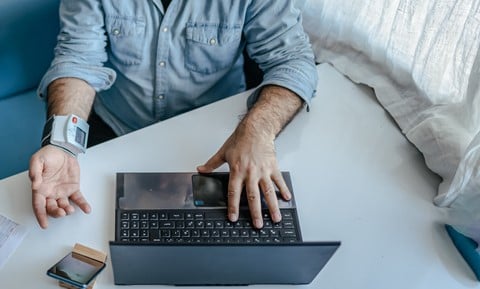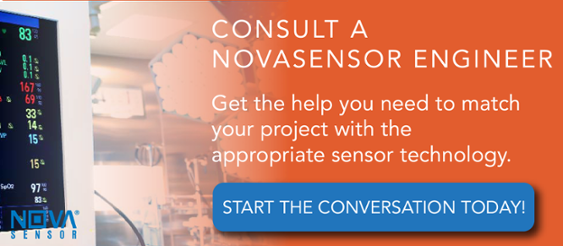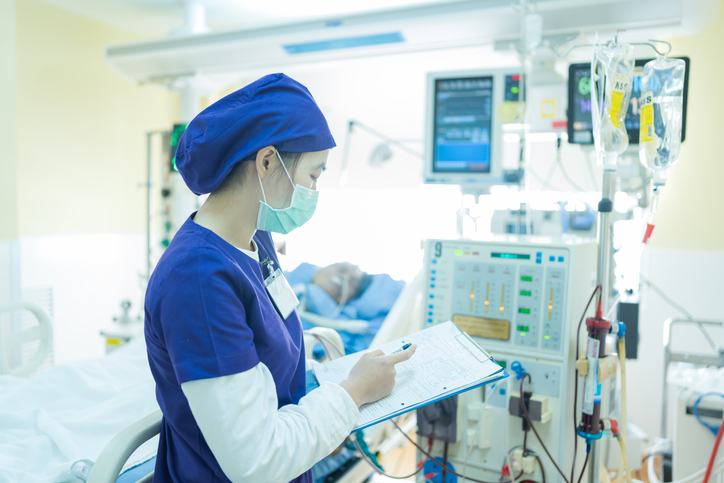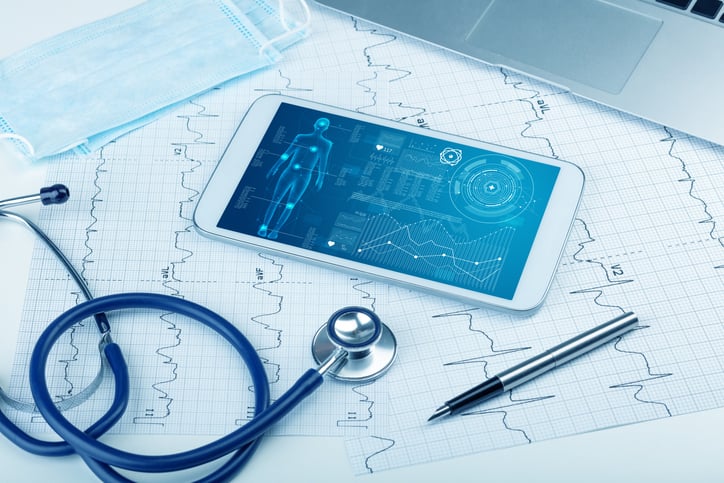How Custom Health Monitoring Sensors are Relocating Patient Care

Let's go back a few decades.
It's the mid-1970s. Maybe you're not feeling well. Perhaps you have a medical condition that needs constant monitoring. Or maybe it's just time for a general wellness check-in.
Whatever your medical need might be, there was only one place to get it handled -- your doctor's office. And that meant scheduling an appointment and heading in for a visit.
While this scenario still plays out today in healthcare, it's no longer the only option for patients to connect with their doctors or other medical professionals to receive treatment.
Thanks to advances in technology -- as well as a major push (more like a shove) by a global pandemic's quarantine -- in-home telehealth and remote patient care are now alternatives to receiving medical care in traditional settings.
Just like with the miniaturization of medical devices, custom health monitoring sensors are bringing new levels of versatility & functionality to medical equipment, making it more possible to meet patients where they are for care.
3 Ways Health Monitoring Sensors Bring Care to the Patient
Because of complexity or safety, there are some elements of treatment that simply can't occur outside of a doctor's office. For instance, you'll likely never have an MRI outside of a medical setting the same way you wouldn't have a major surgery.
Still, there are many parts of patient care that are successfully finding their place outside of healthcare settings and providing for improved patient outcomes.
And with custom integrated sensor technology bridging the gap between the doctor's office and home, it's possible that more facets of care will take place outside of a traditional medical setting:
- Telehealth visits
- Wearable monitoring devices
- Field treatment
1. Telehealth Visits
A viable and increasingly popular alternative to in-office visits, health sensors and telehealth links medical professionals with patients quickly -- and safely -- regardless of location. For the patient, the interaction with a healthcare provider can happen from the comfort of their couch.
With wearable medical devices that have integrated sensor technology, there's little lost from a visit happening remotely. For example, smart home medical devices that use Bluetooth or ANT+ technology can quickly and accurately (and securely) relay health information captured by sensors, such as heart rate, oxygen saturation levels, respiration rates, temperature, and more. The data collected is no different than what would have happened had the visit occurred in an office. And with the exception of a few seconds lost for data transmission, there's nothing lost from face-to-face visits.
An Aside on TelehealthWhile telehealth visits are more convenient and encourage more regular interaction between medical professionals and those they treat, healthcare providers and patients are seeing a variety of benefits, including:
|
2. Wearable Technology in Healthcare
Think of the last time you went to the gym or took a walk through a busy park. How many people did you see sporting fitness trackers or smart watches on their wrists? Probably almost as many as you saw with a smartphone in hand.
This new intersection of technology and fitness has made it easier for the masses to keep tabs on their fitness metrics 24/7. It takes no effort to check a variety of fitness parameters, such as daily steps, heart rate, or calories burned.
The same applies to medical treatment outside medical offices.
Wearable technology in health care allows medical professionals to observe patients over long periods of time without interrupting their lives. In some ways this data is more invaluable than what could be collected in an office. The patient is essentially allowed to live their life while their smart medical devices track and record data -- something not possible sitting on an examining table.
With OEM medical devices outfitted with custom integrated sensor technology, healthcare providers can collect and analyze data from their patients in real-time and track changes in a way previously not possible in a home setting. What's more, a sudden change or unsafe spike in certain vitals can trigger an alert to the provider to check in or alert first responders.
3. Field Treatment
Sensor technology is allowing for improved medical care no matter the location. In particular, when it comes to providing medical care in ambulances and other field settings, this technology has drastically improved patient outcomes.
One of the major ways that wearables are being used in an ambulance setting is through the use of vital monitoring devices. Just like with in-home telehealth, these devices can be worn by a patient and monitored remotely by paramedics or other medical personnel, including those at a hospital. For example, if a patient's heart rate or oxygen saturation levels become dangerously low, the paramedics can be alerted immediately and take action accordingly. This kind of real-time monitoring makes it possible for paramedics to detect potential problems before they become more serious emergencies, allowing them to provide more effective pre-hospital care.
In addition to vital signs monitoring, wearable sensors are also being used to detect physical trauma in patients before they reach the hospital. By equipping ambulances with motion sensors that measure body movement and gait analysis systems, medical personnel can more accurately assess a patient’s physical condition prior to arrival at a hospital.
Healthcare Sensor Innovations for New Mobility
Working with an OEM sensor manufacturer is a critical part of ensuring that mobile sensor technology is being used to its full potential. These manufacturers have the experience and expertise to develop custom-made sensors for specific medical applications that meet the exact needs of clinicians and patients alike. They know how to create tailor-made solutions that are both reliable and effective, while also remaining cost-effective for OEM medical products.
For instance, a smart blood pressure monitor that's used for remote patient monitoring. Unlike its predecessors, the device takes measurements at regular intervals during the day, meaning it sees more use. When working with an OEM medical sensor manufacturer, they can customize the sensors to ensure they meet the particular requirements of use -- perhaps it needs to be more durable? Or maybe the sensor has to take measurements over a smaller area on the body.
A medical sensor manufacturer works with you to meet all the demands your OEM medical devices face during their useful life.
Patient Care Avances: Always in Motion
The rise of remote care and telehealth has been a game-changer for patient care. Custom health monitoring sensors play an integral role in this shift as they enable data to be collected without the need for face-to-face visits.
With OEM medical sensor companies creating custom solutions that meet the exact needs of clinicians and patients alike, healthcare providers can now care for patients regardless of location in many instances.
Upgrade Your Medical Devices & Sensors
Start the conversation today with one of our engineers:




